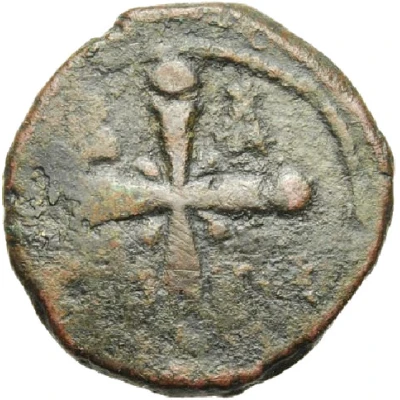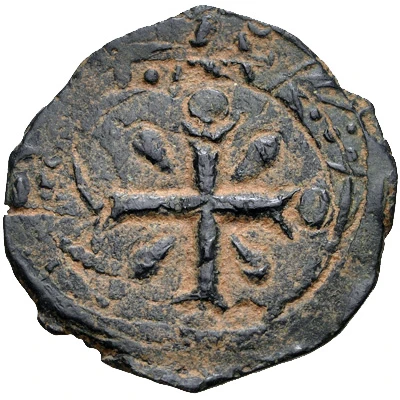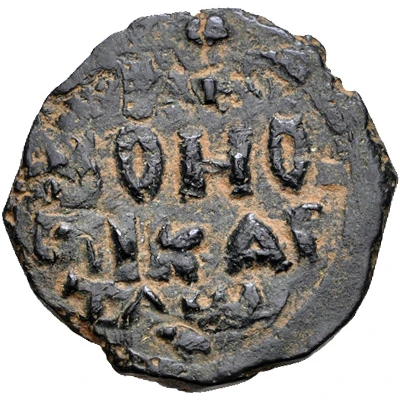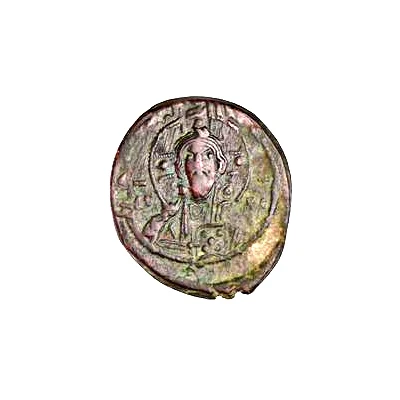
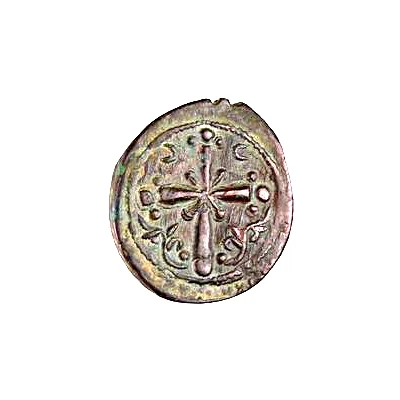

© American Numismatic Society (ANS)
Follis - Baldwin II Christ halo - Light type ND
| Copper | 6.26 g | 28 mm |
| Issuer | County of Edessa (Crusader and Christian states in the Eastern Mediterranean) |
|---|---|
| Count | Baldwin II of Jerusalem (1100-1104, 1108-1118) |
| Type | Standard circulation coin |
| Years | 1100-1118 |
| Value | Follis (1) |
| Currency | Denier (1098-1144) |
| Composition | Copper |
| Weight | 6.26 g |
| Diameter | 28 mm |
| Shape | Round (irregular) |
| Technique | Hammered |
| Orientation | Coin alignment ↑↓ |
| Demonetized | Yes |
| Updated | 2024-10-04 |
| Numista | N#135567 |
|---|---|
| Rarity index | 84% |
Reverse
Latin cross with central X and globus and two pellets at the end of each extremity; crescents to upper left and right, floral scroll below
Comment
References: CCS.manque-Ratto.2494-2496, Schl Pl. I.13-15This coin in the 19th cent was assigned by Schlumberger as a crusader issue from Edessa, but some dealers think it’s an anonymous issue follis (class I), minted in Costantinople and attributed to the reign of Nicephorus III AD 1078-1081.
References for Nicephorus III follis: Sear 1889, DOC I.1-64
In Numista, see N#N# 60386
G. LUNARDI 1985 - VOL II - CE6 (I 13)
Interesting fact
One interesting fact about this coin is that it features a unique blend of Christian and Islamic influences in its design. The coin's obverse side bears an image of Baldwin II, the Count of Edessa, with a Christ halo surrounding his head, while the reverse side features an Arabic inscription in a cursive script, indicating the coin's denomination and mintage. This blending of religious symbols and languages reflects the cultural exchange and coexistence that existed in the region during the Crusader period.

